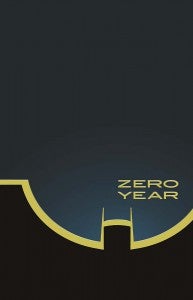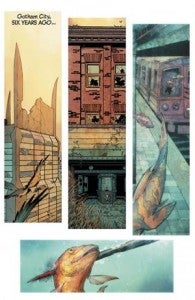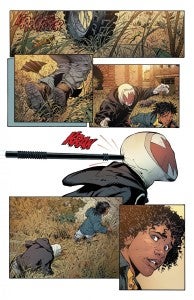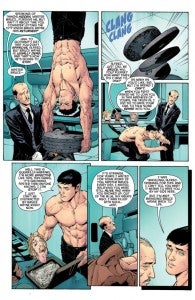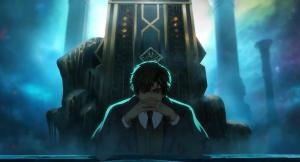Videos by ComicBook.com
#21, out today, marks the start of Scott Snyder and Greg Capullo’s epic Batman: The Zero Year story, which will reportedly take us clear through to Comic-Con next year before leading into a summer event at the end of it.That’s far in the future, though, and what Snyder really wants us to worry about in this issue is the past–specifically, the year before Superman showed up and the DC Universe was changed forever. The story begins “six years ago,” in a version of Gotham that resembles No Man’s Land (or The Dark Knight Rises), with the leader of the Red Hood Gang believing himself to have killed Batman and taken over the City. It’s a wasteland–the issue begins with a child fishing out of a flooded subway tunnel, and then being jumped by gang members.
The Dark Knight Trilogy Batman Forever Batman Begins Mad Max Batman Zero Year

